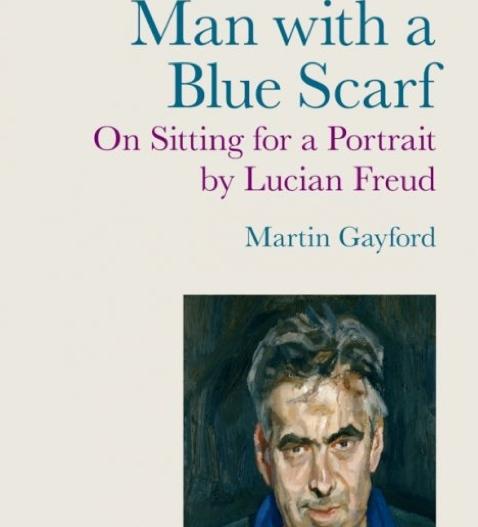Visit the room in the Louvre where the Mona Lisa hangs, and all you will be able to see is a glass-covered rectangle and hundreds of camera phones held high. Certainly you will be unable to examine the woman in the picture, or contemplate the work of the artist who painted her. Yet they - sitter and artist - are, finally, what matters: that one day, the (probable) Lisa Gherardini, wife of a silk-merchant, sat down in front of an artist, who began to paint her. Five hundred years later, another sitter, the art critic Martin Gayford, sits down in front of an artist, Lucian Freud, who likewise begins to paint.
Now, six years after Man with a Blue Scarf has been completed, sold and hung in a private house in California, Gayford has published his diary (or an edited version thereof) to attempt to tell us what it is like to be a subject, to be acted on, to be handed down to art history as a man in a blue scarf.As Gayford runs through the long months of sittings, of desultory (and more focused) conversation with Freud, the reasons for sitting, and the reasons for painting portraits, are hashed out. For the sitter, vanity is one reason, a desire for a small chunk of immortality; another is the chance to make a contribution to the creation of an alternate reality.
For the painter, the answer is equally layered. Freud needs, perhaps feeds, off his models, requiring some sort of psychic contribution from them before he begins. (What that contribution is is never quite defined, and is probably indefinable: a horse he is painting at the same time as Gayford is a fine sitter, although one of its stable-mates is rejected as not having the right stuff.)
Sitting for Freud is an endurance test, a marathon rather than a sprint, with some portraits requiring hundreds of hours during which the sitter must take up the same position, wear the same clothes, provide that psychic and muscular something. Post-photography, the focus on psychic and artistic truth rather than accuracy of reproduction, has come to the fore – no one cares if the portrait of Gayford looks like Gayford (although it very much does); they care that it's a good portrait.
What Freud, what Gayford, and what the viewer mean by a good portrait are all surely different things, and given the diary format, it's not something Gayford, a thoughtful and incisive critic, can more than briefly touch upon. For while a diary records the event – which in the case of portrait sittings is not hugely dynamic – even an edited version is unable to record the shifting focus of aim and achievement.
Therefore, much of the pleasure in this slight but nonetheless charming book, is to be found in Freud’s comments. These are usually elliptical, evasive of scrutiny both by others and by himself, on the nature of art, the abilities (or otherwise) of his fellow artists – Bacon he judges a poor draughtsman – “It’s just not there”. Sickert, however, he admires for his drawing abilities, and also for his pleasure in what the earlier artist called the “gross arts, dealing joyously with gross material facts”.
Freud perhaps gets closest to an artistic credo when he discusses Elizabeth David and her attitude to cooking: “She had such wonderful fastidiousness and a sense that in the end you are eating for your life.” Fastidiousness is “such a marvellous quality, don’t you agree?” Fastidiousness, for Freud, is “being reasonable to the point where it turns into imagination. I think that’s wonderful”. And he’s right. It is.










![SEX MONEY RACE RELIGION [2016] by Gilbert and George. Installation shot of Gilbert & George 21ST CENTURY PICTURES Hayward Gallery](/sites/default/files/styles/thumbnail_125_x_125_/public/mastimages/Gilbert%20%26%20George_%2021ST%20CENTURY%20PICTURES.%20SEX%20MONEY%20RACE%20RELIGION%20%5B2016%5D.%20Photo_%20Mark%20Blower.%20Courtesy%20of%20the%20Gilbert%20%26%20George%20and%20the%20Hayward%20Gallery._0.jpg?itok=3oW-Y84i)




Add comment